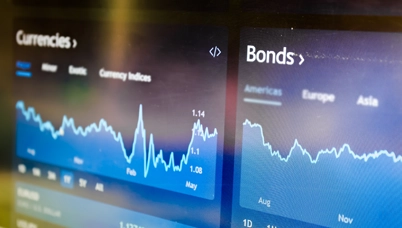Quantum View : Repo Rate Below 6%; first time since 2010
Posted On Thursday, Jun 06, 2019
The Monetary Policy Committee (MPC) of the Reserve Bank of India delivered its third consecutive 25 bps rate cut but the first unanimous decision in this rate cutting cycle. It has of course also coincided with the change in the RBI Governor with Shaktikanta Das voting for the rate cut in all 3 meetings.
The MPC having voted 4-2 in the February and April policy meetings when they reduced the Repo rate from 6.5% back to 6.0%; voted 6-0 in the June policy meeting to take the Repo Rate to 5.75%.
This holds significance as the Repo Rate has breached below the 6% rate for the first time since 2010. That tells you that India has struggled to get low interest rates over many years now. As many regular readers of Quantum View would know our stated view that In the 4% CPI Inflation Target plus 1-2% Real Rate Framework, we do not expect the Repo Rate to go and sustain below the 6% range
So this rate move below the 6.0% level and one that was secured with an unanimous vote is particularly noteworthy.
What is of even more significance is the change in stance to accommodative. The RBIs response to the question on accommodative stance leaned more towards the direction of ‘with the move to accommodative stance, rate hikes are out of the table’.
The markets should of course read it as a clear indication that the RBI is deeply concerned about growth and is prepared to use interest rates and liquidity to boost demand.
We expect another 25 bps rate cut in August but will caution against too much exuberance on rate cuts post that.
That the Repo rate has been cut below 6% and the stance has changed to accommodative has happened only twice in the last 20 years; Once post the Lehman crisis, 2008-2009 and the other post the dot com, global slowdown in 2002-2003 period. As we noted above, it is not a common occurrence in India. We should also note that growth levels and prospects was way lower during those times to justify Repo rates well below 6%.
In 2008-09, they were fighting a global financial crisis and responded to it by cutting rates sharply and adding in huge amounts of liquidity. We do now know in hindsight that delayed rate hikes by the RBI then did end up complicating the macro-economic and fiscal issues.
In 2002-03, India was running a current account deficit on the back of global slowdown, the NDA government was successful in keeping inflation low despite drought and at the same time attract capital inflows. RBI responded to support growth as well as to dampen capital inflows and keep INR under check.
The MPC, this time, although worried on growth, has still retained the GDP forecast at around 7%. At above the 7.5% GDP growth (in the new series) is where the RBI believes is the potential level of output growth. So if they believe the 7% GDP target for FY 20 to be true, there isn’t much panic and need to cut rates aggressively to push up growth to potential.
GDP growth has of course been on a downslide for a few quarters and we believe a major reason to be due to liquidity not being to the sufficient level in the economy. The Currency to GDP ratio has remained below its long term average since demonetization and we wonder whether India has indeed had trouble in adjusting to the lower cash in the system. We very commonly hear the Mumbai business trader lamenting ‘market mein paisa nahin hein’; the real estate market is also stuck in low sales resulting in cash being stuck in assets not liquidating.
The RBI has added considerable liquidity into the system especially in the last 6 months and we expect that currency which went out of the system pre elections should come back in the next two months. By August when RBI declares its dividend, system liquidity should be in a comfortable surplus aiding monetary transmission. The RBI thus seems relatively confident of GDP growth inching higher towards 7.5% in H2 Fy 20. They have also quite clearly stayed away from explicitly announcing any liquidity support for NBFCs which seeme to have left the Equity Markets disappointed.
For the bond markets though the policy outcome had lot of good things. Bond yields may have further room to drop as the markets will execpt further rate cuts especially another 25 bps in August to take the Repo rate to 5.5%.
Disclaimer, Statutory Details & Risk Factors:
The views expressed here in this article / video are for general information and reading purpose only and do not constitute any guidelines and recommendations on any course of action to be followed by the reader. Quantum AMC / Quantum Mutual Fund is not guaranteeing / offering / communicating any indicative yield on investments made in the scheme(s). The views are not meant to serve as a professional guide / investment advice / intended to be an offer or solicitation for the purchase or sale of any financial product or instrument or mutual fund units for the reader. The article has been prepared on the basis of publicly available information, internally developed data and other sources believed to be reliable. Whilst no action has been solicited based upon the information provided herein, due care has been taken to ensure that the facts are accurate and views given are fair and reasonable as on date. Readers of this article should rely on information/data arising out of their own investigations and advised to seek independent professional advice and arrive at an informed decision before making any investments.
Mutual fund investments are subject to market risks read all scheme related documents carefully.
Please visit – www.QuantumMF.com to read scheme specific risk factors. Investors in the Scheme(s) are not being offered a guaranteed or assured rate of return and there can be no assurance that the schemes objective will be achieved and the NAV of the scheme(s) may go up and down depending upon the factors and forces affecting securities market. Investment in mutual fund units involves investment risk such as trading volumes, settlement risk, liquidity risk, default risk including possible loss of capital. Past performance of the sponsor / AMC / Mutual Fund does not indicate the future performance of the Scheme(s). Statutory Details: Quantum Mutual Fund (the Fund) has been constituted as a Trust under the Indian Trusts Act, 1882. Sponsor: Quantum Advisors Private Limited. (liability of Sponsor limited to Rs. 1,00,000/-) Trustee: Quantum Trustee Company Private Limited. Investment Manager: Quantum Asset Management Company Private Limited. The Sponsor, Trustee and Investment Manager are incorporated under the Companies Act, 1956.
Related Posts
-

Debt Monthly for August 2025
Posted On Friday, Aug 08, 2025
The big headline for the debt market in July came on the second-last day of the month when the US announced a 25% tariff on Indian exports to the US...
Read More -

Debt Monthly for July 2025
Posted On Monday, Jul 07, 2025
Flashpoint Middle East: War, Oil, and the Strait of Hormuz Risk: In June 2025, the Israel-Iran conflict erupted into full-scale war, sparking widespread geopolitical instability.
Read More -

Debt Monthly for June 2025
Posted On Tuesday, Jun 10, 2025
United States: U.S. Treasury yields rose sharply, with the 10-year crossing 4.59% due to hawkish Fed signals and fiscal concerns.
Read More



